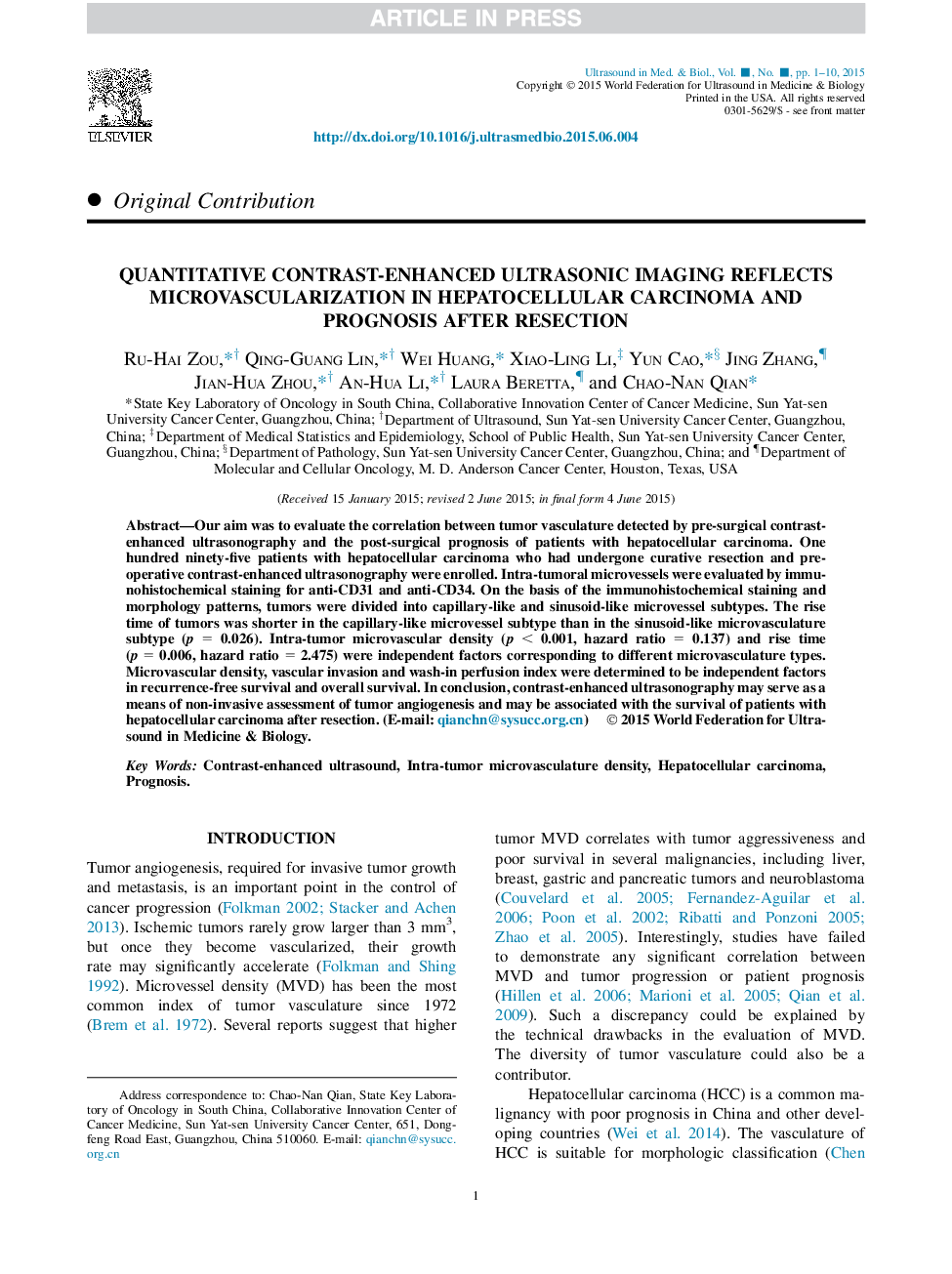| Article ID | Journal | Published Year | Pages | File Type |
|---|---|---|---|---|
| 1760452 | Ultrasound in Medicine & Biology | 2015 | 10 Pages |
Abstract
Our aim was to evaluate the correlation between tumor vasculature detected by pre-surgical contrast-enhanced ultrasonography and the post-surgical prognosis of patients with hepatocellular carcinoma. One hundred ninety-five patients with hepatocellular carcinoma who had undergone curative resection and pre-operative contrast-enhanced ultrasonography were enrolled. Intra-tumoral microvessels were evaluated by immunohistochemical staining for anti-CD31 and anti-CD34. On the basis of the immunohistochemical staining and morphology patterns, tumors were divided into capillary-like and sinusoid-like microvessel subtypes. The rise time of tumors was shorter in the capillary-like microvessel subtype than in the sinusoid-like microvasculature subtype (p = 0.026). Intra-tumor microvascular density (p < 0.001, hazard ratio = 0.137) and rise time (p = 0.006, hazard ratio = 2.475) were independent factors corresponding to different microvasculature types. Microvascular density, vascular invasion and wash-in perfusion index were determined to be independent factors in recurrence-free survival and overall survival. In conclusion, contrast-enhanced ultrasonography may serve as a means of non-invasive assessment of tumor angiogenesis and may be associated with the survival of patients with hepatocellular carcinoma after resection.
Related Topics
Physical Sciences and Engineering
Physics and Astronomy
Acoustics and Ultrasonics
Authors
Ru-Hai Zou, Qing-Guang Lin, Wei Huang, Xiao-Ling Li, Yun Cao, Jing Zhang, Jian-Hua Zhou, An-Hua Li, Laura Beretta, Chao-Nan Qian,
